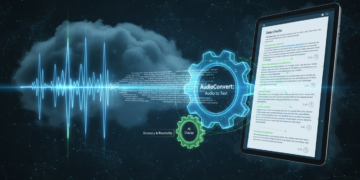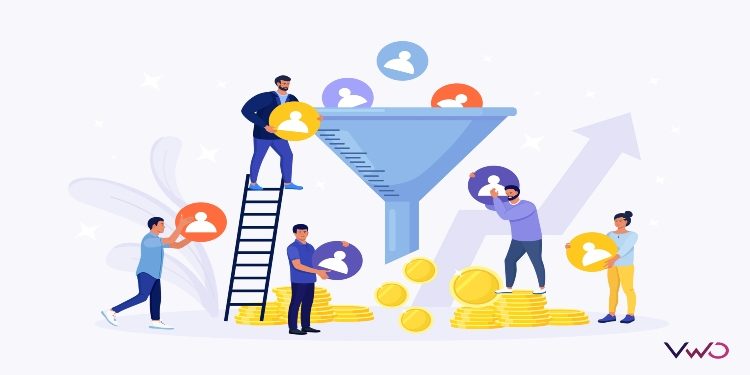In the business world, customer service call centers are essential. They’re vital hubs where customers can get help, report issues, and learn about products/services. Call center agents are key to solving problems and ensuring customer satisfaction.
What is a Customer Service Call Center?
A customer service call center constitutes a distinct division within a company specifically designed to manage both incoming and outgoing customer calls. Staffed with trained agents, these centers are tasked with offering guidance, information, and aid to customers concerning the company’s offerings. The core objective of a call center is to swiftly and effectively resolve customer queries, thereby promoting favorable engagements and cultivating trust.
Types of Call Centers
Call centers come in various forms, each catering to specific business needs and customer requirements. Some common types include:
1. Inbound Call Centers
These centers handle incoming customer calls, aiming to address inquiries and provide support.
2. Outbound Call Centers
They focus on making calls to customers for telemarketing, lead generation, and follow-ups.
3. Help Desks
Help Desks support end-users with technical issues and general inquiries.
4. Virtual Call Centers
These operate remotely, managing customer interactions using technology.
5. Omnichannel Call Centers
They handle customer inquiries across multiple channels for a consistent experience.
6. Sales Call Centers
Focused on outbound sales activities, targeting new customers and closing deals.
7. Technical Assistance Centers
Specialize in resolving technical issues for customers.
Each type of call center serves a distinct purpose, tailored to meet the needs of both businesses and customers in different contexts.
Roles and Responsibilities in Call Center Operations
Effective call center operations rely on a diverse set of roles and responsibilities, each contributing to the smooth functioning of the center. Key roles include:
1. Call Center Agent
– Handle inbound/outbound calls, provide product/service info, troubleshoot.
– Enter accurate data, and meet performance indicators (call resolution, CSAT, AHT).
2. Team Leader/Supervisor
– Lead/manage agent staff, monitor/evaluate performance.
– Coach agents, handle escalated complaints, and ensure the team meets objectives.
3. Call Center Manager
– Manage call center operations, establish goals/objectives, and manage budgets/resources.
– Implement policies/processes and analyze/improve performance.
4. Quality Assurance Specialist
– Monitor/evaluate consumer-agent interactions, and conduct quality audits.
– Provide improvement suggestions, develop/implement QA processes, and ensure standards.
5. Trainer
– Conduct training sessions, create training materials, and provide product/process knowledge.
– Identify/fill training gaps, and keep programs up-to-date.
6. Workforce Manager
– Forecast call volumes, schedule staff, and monitor adherence.
– Analyze data, optimize staffing, manage breaks/shifts/vacations, and increase efficiency.
7. Customer Experience Manager
– Focus on increasing customer satisfaction, and analyze feedback.
– Implement initiatives, resolve issues with other departments, monitor trends, and implement improvements.
Key Performance Indicators (KPIs) in Call Centers
Measuring performance is essential for assessing the efficiency and effectiveness of call center operations. Key performance indicators guide efforts towards continuous improvement while prioritizing call center service levels ensures timely and accessible assistance. Some critical KPIs include:
1. AHT: The average duration of handling a customer call, encompassing talk, wait, and after-call tasks, crucial for staffing, agent performance assessment, and identifying improvement areas.
2. FCR: The percentage of customer inquiries or issues resolved on the initial interaction, gauging customer service effectiveness.
3. CSAT: Customer satisfaction measured through post-interaction surveys, offering insights into overall customer experience.
4. NPS: Measures customer loyalty by assessing the likelihood of recommending the company’s offerings.
5. FRT: Measures the time taken for a customer to receive the first response via channels like chat, email, or social media, with calculation varying by channel and period.
6. ASA: The average time for an agent to answer a call in call centers indicates responsiveness.
7. ESAT: ESAT measures call center agents’ satisfaction and engagement by dividing satisfied employees by the total surveyed, then multiplying by 100.
8. Retention Rate: Retention Rate shows how many employees stay with a company over time, reflecting talent retention and turnover reduction. High rates indicate a positive work environment and growth opportunities.
Measuring Service Level in Call Centers
A call center’s service level is the percentage of calls answered within a set time frame, also known as the target time threshold. It’s crucial for customer satisfaction and can be calculated for any duration or number of agents. It’s closely linked to response rates, caller wait times, and order fulfillment.
Maintaining this level is vital for customer happiness and loyalty. According to Kevin Daly, Founder of ValueAd, engaging agents in meaningful conversations with customers can improve outcomes, reduce attrition rates, and enhance satisfaction. Learn more in our podcast episode “From call center agent allocation to fighting agent attrition.”
Methods to Measure the Service Level
Call centers measure service level (SL) using a simple formula:
SL (%) = (Number of Calls Answered within threshold / Number of Calls Offered) * 100
For instance, if 1600 calls were answered within the target time out of 2000 calls offered:
SL = (1600 / 2000) * 100 = 80%
A higher SL percentage indicates better service. However, different call centers may manipulate data to their advantage. They might exclude abandoned calls or adjust the target time to inflate SL figures. For example, increasing the target time from 20 to 30 seconds could artificially improve SL metrics.
Service Level Agreements in Call Center
Success in business hinges on understanding and meeting customer expectations. When clarity is lacking, managing expectations becomes tough. To address this, businesses use Service Level Agreements (SLAs). SLAs define service expectations between providers and clients, even within the same organization. They range from a few sentences to extensive documents and are crucial in modern contracts. SLAs should be adaptable, with clear processes for updates to meet evolving needs.
SLAs serve multiple functions:
1. Alignment and Accountability: SLAs ensure both parties understand their responsibilities, preventing misunderstandings or disputes. They serve as legal documentation, eliminating post-contractual confusion.
2. Performance Measurement: They establish clear metrics for evaluating service quality, ensuring transparency and preventing debate over key performance indicators (KPIs).
3. Recourse for Non-Compliance: SLAs outline consequences for unmet obligations, holding both parties accountable and providing recourse for breaches.
4. Enhanced Partnerships: By managing commitments, SLAs foster productive relationships between service providers and clients, attracting new business opportunities and enhancing brand reputation.
Conclusion
Understanding the diverse types of call centers and their responsibilities enables organizations to facilitate seamless interactions, nurturing trust and loyalty.
Call centers leverage technology and expertise to forge enduring connections as businesses adapt to evolving consumer expectations. Ultimately, call centers transcend mere operational functions, shaping perceptions and propelling businesses toward sustained growth. Embracing excellence, organizations can elevate brand loyalty and advocacy, ushering in a new era of customer-centricity.











































































